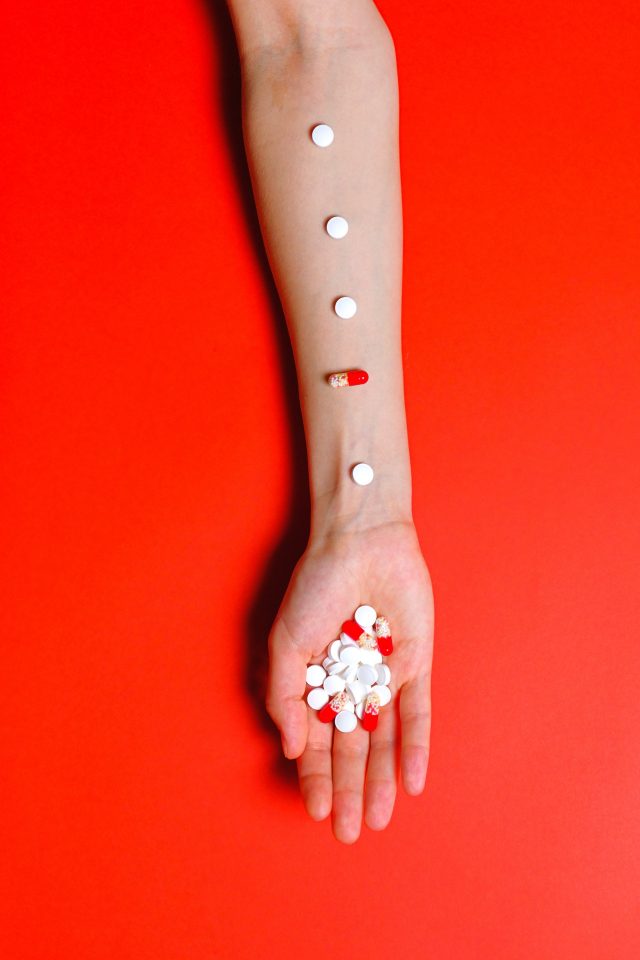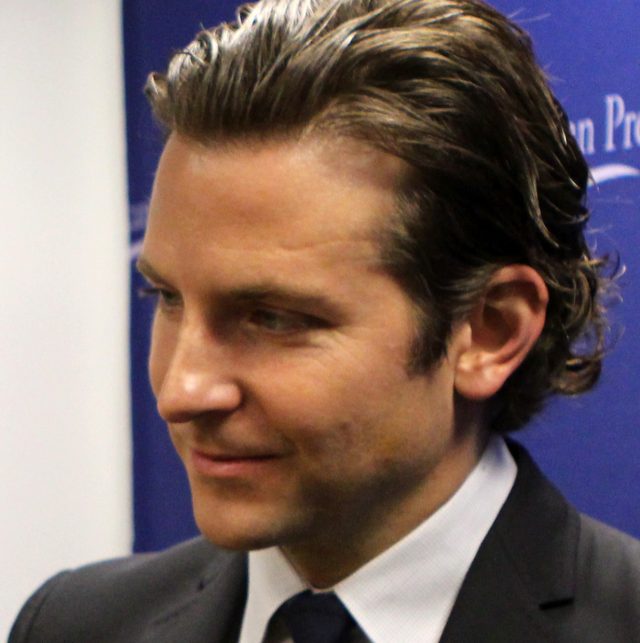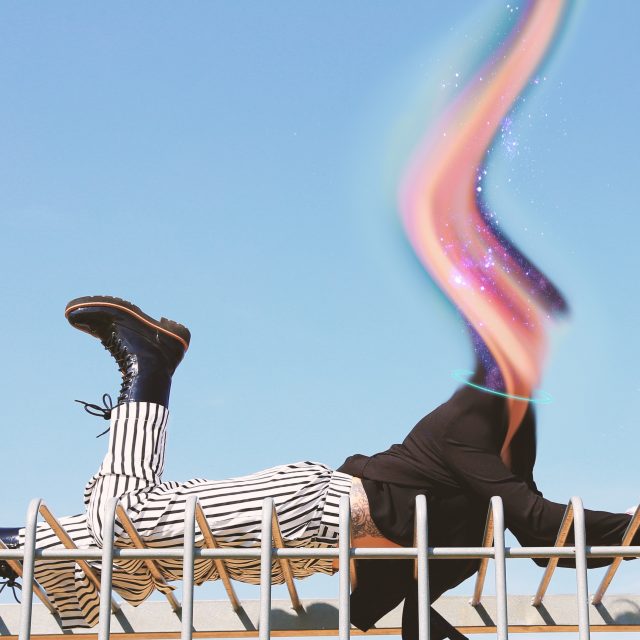Imagine creating the very addictive Oxycontin, an opioid product that people must have. I mean, they need your product so bad that they’re willing to sacrifice their own career, their loved ones, and even life itself to buy what you’re selling. Now distribute this product through a nationwide network of trusted salespeople who also make a great deal of money by selling your product.
Imagine how rich you would be.
That’s exactly what happened to one family in America with their invention of OxyContin.
Opioids have been on the market since 1911 and until the 90’s, the use of these narcotics was limited to very specific circumstances. These powerful pain killers would only be prescribed for end-of-life care or post-surgical pain relief. Everyone within the medical profession understood that these drugs were highly addictive. These drugs were ripe for abuse.
That all changed in 1996.
That was the year the Sackler family who owns Purdue Pharma released a new pain medication called OxyContin – a long-acting form of oxycodone. Purdue Pharma makes other pain killers, but this one was a blockbuster hit. Because of it, the Sacklers became one of the wealthiest families in the US. It was reported that their net worth reached $14 billion in 2015 (yes, that’s a “b” for billions). The wealth was created largely on the strength of profits from OxyContin.
How did they do it?

Opioid addiction has helped fuel the prescription drug epidemic in the US.
And better yet, Oxycontin was a long-acting painkiller, they said. This meant the drug was excellent for chronic pain, especially if patients used the twice-daily dosage recommendation.
This was simply not true (as history has shown us). In fact, it was a lie.
The first seeds of the opioid epidemic were planted. Doctors and hospitals began prescribing opioids for long term and chronic pain, and they did so with little or no clinical evidence to back these claims. To make matters worse, Purdue Pharma poured money into the joint Commission on the Accreditation of Healthcare Organizations. They even created a rating system for Doctors and Hospitals that punished or rewarded those for how well they reduced pain in their patients.
Andrew Kolodny, the co-director of the Opioid Policy Research Collaborative at Brandeis University says the pharmaceutical industry financed a “multi-faceted campaign” that “changed the way the medical community thought about opioids and changed the culture of opioid prescribing in the United States.”
You don’t have to look far to see that he is right. The opioid crisis in the U.S. is an “American thing”. It’s uniquely ours. We prescribe opioids to our citizens 40% more than any other developed country.
According to the Centers for Disease Control and Prevention, (CDC) U.S. opioid prescriptions almost quadrupled over a 15-year period.
After the release of Oxycontin, potent narcotics began to flood the U.S. and sales for this highly addictive substance skyrocketed. They go on to report that the number of prescription opioids sold to pharmacies, hospitals and doctors’ offices almost quadrupled from 1999 to 2014. An odd fact since they found no evidence of a change in Americans’ overall reported pain.
Enter the distributors. With such a demand for product, it’s easy to understand how the greedy and unscrupulous jumped into the action. Across the country, pain clinics began to pop-up. These clinics had no real desire to learn if the patient’s pain was real. They were created to simply dispense these pain killers to patients even when there was no legitimate medical reason. It was easy for a clinic to see 50 or 60 patients in a day, charging them anywhere from $200 to $400 for a quick exam and a prescription for their “pain”.
Besides these pill mills, many doctors bear responsibility for failing to do their own research and failing to dig into the bogus claims made by the pharmaceutical industry.

Thousands of Americans have lost a loved one to the opioid epidemic.
Back to the Sackler family and Purdue Pharma.
The Sacklers appear to be good people. They have a long history of doing good. They donate to civic programs and symphonies so why did the state of Massachusetts sue the Sacklers? Money. It’s that simple. This epidemic has become extremely expensive (link to our cost blog) for all levels of government. In fact, the costs are staggering. Not only does the epidemic come with medical and law enforcement costs, but it has an enormous impact on productivity with 10.3 million Americans abusing the substance.
They need some of this money, too.
Addicts make lousy taxpayers and these costs are becoming a huge burden on our society. Massachusetts was the first to sue the family behind the company, but many states, counties, and cities from all corners of America are lining up to sue Purdue Pharma.
And it’s not just the Sacklers.
The 76-year-old founder of Insys Therapeutics, John Kapoor has recently been sentenced to more than 5 years in prison. The former billionaire aggressively marketed the powerful opioid Subsys and was the first successful prosecution of a pharmaceutical executive tied to the opioid epidemic.
U.S. District Judge Allison Burroughs who sentenced Kapoor said, “This was an offense of greed.”
We are still in the grip of this crisis with the recent wave of overdose deaths from fentanyl, a dangerously powerful and synthetic opioid.
Hundreds of thousands of Americans have died from this epidemic. An epidemic that has put billions of dollars into the pockets of pharmaceutical manufacturers like Purdue Pharma. Their role in this crisis is coming into focus now as more litigations and investigations are directed toward these profiteers. As insurance companies get charged exorbitant amounts of money for shady drug rehab programs, perhaps the true culprits will finally be held accountable.
Maybe we should start petitioning to have some of this money go toward evidence-based drug rehab for those who became addicted. Thoughts?
References:
Emanuel, Gabrielle. Opioid Executive John Kapoor Found Guilty In Landmark Bribery Case May 2, 2019
Center for Disease Control } Opioid Overdose https://www.cdc.gov/drugoverdose/data/prescribing.html
Affairs (ASPA), Assistant Secretary of Public (December 4, 2017). "What is the U.S. Opioid Epidemic?". HHS.gov. Retrieved December 16, 2019.
Scholl L, Seth P, Kariisa M, Wilson N, Baldwin G. Drug and Opioid-Involved Overdose Deaths – United States, 2013-2017. WR Morb Mortal Wkly Rep.
Kolodny et al. 2015. The prescription opioid and heroin crisis: A public health approach to an epidemic of addictionexternal icon. Annual Review of Public Health 2015 (36); 559-74.
Commonly abused prescription drugs in the U.S. include opioids, benzodiazepines, and stimulants. These categories encompass medications prescribed for pain relief, anxiety, and attention deficit disorders, respectively. The high potential for addiction and misuse of these drugs contributes significantly to the national issue of prescription drug abuse.
The health consequences of prescription drug abuse include addiction, overdose, and even death. Abuse can also lead to physical and psychological harm, impacting the heart, liver, and mental health, potentially causing long-term damage or chronic health conditions.
Efforts to address prescription drug abuse in the U.S. include stricter prescription guidelines, increased monitoring of prescription drug use, educational programs on the dangers of drug abuse, and the promotion of take-back programs to safely dispose of unused medications.Additionally, there is a focus on improving access to treatment and recovery services for those struggling with addiction.
Yes, effective strategies for preventing prescription drug abuse include educating patients and healthcare providers about the risks of addiction, implementing prescription monitoring programs to detect and prevent overprescribing, enforcing regulations on pharmaceutical companies, and providing alternative pain management options such as physical therapy and non-addictive medications.
Addiction is a scary thing – no doubt. Parents fret over it, schools try to prevent it, politicians politicize it (that’s another discussion), but everyone is afraid of it. Let’s face it - addiction comes with a label and that label is hard to get out from under. Some would say almost as hard to beat as the disease itself. The label of addiction immediately comes with a sense of hopelessness.
“Your life is over!”
“You’ll never amount to anything!”
“You’ve ruined everything!”
But people have come back from the disease of addiction. Not only have they returned from the abyss, but they have flourished. You must believe that addiction is completely treatable using effective and consistent care.
The following are examples of individuals, both entrepreneurs, and celebrities, who have succeeded after their addiction.
There is something about recovery that begins to unlock the creative within an individual and reignites their desire to thrive. Many individuals have even started businesses while in rehab.
Akshay Nanavati battled with heroin and alcohol. At one point it was so bad Akshay considered taking his own life. Yet this Marine Corp veteran beat his demons and is now sober. His company, existing2living, is thriving and often featured in top news portals like Forbes, USA Today, and CNN.
Julio Briones addiction to alcohol landed him in prison for a 10-year sentence. During his two-year stay at a rehab facility, he was able to get clean and focus on his family and what is important to him. Julio now owns AnswerMan Specialty Services, which consults for prisons and provides personal crisis management solutions.
Blake Denman believes that starting his business was the second toughest thing he has ever done besides getting sober, but he used what he learned in recovery to find success with his company, Ricketyroo, a digital marketing company who’s entire team is in addiction recovery. Blake believes, “There's no doubt that if recovery wasn't my foundation then my business would not be where it is today.”

Many young entrepreneurs have used drug rehabilitation as a spring board to their ultimate financial success.
Jessica Mehta experienced success after winning not one, but two national bronze awards for Startup of the Year in 2015. Her SEO writing services company, MehtaFor is a small but thriving company and she believes that the same attributes that fed her eating disorder also helped fuel her ambition.
Per Wickstrom is the president and founder of Best Drug Rehabilitation. His rehabilitation center focuses on helping people beat their addiction using holistic and natural methods. Wickstrom says he turned to alcohol at a young age, instead of facing his problems head-on. Alcohol led to drugs and they became his solution to escape life’s problems, a path so many follow on their way to addiction. After rehab saved his life, he turned to a higher calling and opened his own treatment facility which has saved more than 6,000 people to date.
It seems that celebrities and addiction often go hand-in-hand, or at least the media makes it seem that way. The brutal pressure to be perfect, to succeed, to battle criticism, is often too much for some, and alcohol or drugs are an easy method to silence the voices that rage all around them. Although we have read many stories of talented celebrities who took their addiction to its fatal end, many have beat their drug of choice and have soared to new heights within their career.
The country music superstar who is married to movie legend Nicole Kidman, now has 18 #1 hits and 3 Grammys, but in 1998 he first checked himself into a Nashville drug treatment program. His struggle to make a name for himself after winning Star Maker in 1990 took a toll on his psyche. Urban drowned out the voices by using cocaine and alcohol.
“The whole back end of the 90’s were just awful,” Urban admits.

Photo by: J-smith.17 at English Wikipedia. Under CC License
After getting clean, his career began to gain steam, capping it with a #1 hit, Be Here, in 2004. Keith met Kidman a year later. But Urban admits, he let his guard down and ultimately checked into a rehab facility again in 2006. This was only a few months after his marriage to Kidman. Once he was clean again, he got back to work a released a rash of hits, winning Entertainer of the Year in 2011 from the Academy of Country Music. He is now 14 years sober and credits his wife, Nicole who staged an intervention to get him sober.
Now 33, this handsome actor has been in front of the spotlight most of his life. His big break came in 2006 with the monster hit, High School Musical, and as he was presented with more adult roles, so was he presented with the temptations that lure so many in Hollywood. Many doors get opened when you are young and beautiful in Tinsletown and recreational partying can soon turn into a problem, as it did for the young actor.
“I mean, you’re in your 20s, single, going through life in Hollywood, you know? Everything is thrown at you.” Efron recalls.
Eventually, it was reported that alcohol and cocaine abuse started to eclipse his talent and in 2013, Efron checked into a treatment center. This was the turning point for the actor and the impetus to change his life. He ditched his partying-ways and moved in with his brother. The dedication to his sobriety was the pathway to his best roles yet appearing in Neighbors, Dirty Grandpa, and the Ted Bundy biopic.
Efron takes his sobriety one day at a time and still attends AA meetings.
What can be said about Anthony Hopkins that hasn’t already said? A brilliant actor who has two Emmy’s, a Golden Globe, and an Oscar all of which were awarded to Hopkins after he stopped drinking. Even his knighthood (remember he is now Sir Anthony Hopkins) came after he beat his demons.
It’s said that Hopkins’ father was an alcoholic as well. Studies have shown that addiction is often passed down in families and Hopkins was no exception. Drinking at the pub night after night, often with other hard-drinking British actors like Peter O’Toole and Richard Burton, Hopkins admits that he’s made films he doesn’t even remember because he was so drunk.
Eventually, his wife left him and Hopkins, now deep into his own emotional abuse which he was trying to drink away, drove away from a party so drunk he blacked out while driving. Knowing he could have killed someone; Hopkins attended his first AA meeting 2 days later.
Hopkins later said, “I was hellbent on destruction. And I just asked for a little bit of help, and suddenly, pow. It was just like bingo.” He credits AA for saving his life.

This United States Congress image is in the public domain.
Bradley Cooper is arguably one of the hottest actors in Hollywood right now. He was named the Sexist Man Alive by People magazine and Time labeled him as one of the “100 Most Influential People in the World.”
But it wasn’t always this way.
His own self-doubt and insecurities led him to thoughts of ending his own life early in his career. Alcohol and drugs became his solution, but like most, this led to devastating consequences. At one low point, Cooper intentionally smashed his head on a concrete floor while at a party and needed to be rushed to the hospital.
Once he was clean though, things began to change with a breakthrough role in The Hangover which eventually led to blockbuster movies like Guardians of the Galaxy and four years of Oscar nominations.
Bradley admits, “I would never be sitting here with you, no way, no chance, (if I hadn’t gotten sober).”
Nothing great is ever given to you in life. It must be earned. No treatment center in the world will get you sober if you don’t make a personal commitment to do it for yourself. Once you make that decision, you will be amazed at how much motivation you can find within yourself.

No matter what happens to you in your life, you always have the strength to overcome it.
As you reach for success, play to your strengths and your experiences. No matter what happens in your life, believe that you have the power to overcome it. Use these stories of success to light your own passion to recover, then let it rage inside you. Use these stories to set yourself on your path to success and stick with it. Believe that no matter what, you have the power within yourself to get clean.
The price of heroin in California is more than you can afford. In fact, it’s more than you should afford. Although a 2018 study by the National Drug Early Warning System (NDEWS) found that heroin use in the Los Angeles area was lower than the national rate, heroin treatment admissions were still at a dangerously high level.
The US National Library of Medicine used literature based estimates to create a model for the actual monetary cost for the abuse of heroin. They estimate that it costs US taxpayers $51 billion dollars a year – or $50,799 per heroin user.
That’s a lot of money.
And it’s getting worse:
Widespread availability and the contributing use of opioids has doubled the number of heroin users every decade. While the epidemic is obliterating communities and towns throughout the US in astonishing numbers, we forget to remember how devastating the use of heroin can be to just one person.
Heroin’s effects on the brain and nervous are notorious. Its ability to erase any other source of reward or gratification can cause addiction quickly. Sometimes in as little time as two weeks. Combined with heroin’s brutal withdrawal symptoms, the user’s life can quickly spiral out of control. On average you will spend $150 a day or more to support your habit, but there are even greater costs. The price you will pay for an addiction to heroin will impact your work, your life, your relationships, and your health.
Heroin erodes your ability to sustain any honest or responsible behavior with your loved ones. Your marriage, your friendship, even your relationship with your family will break down as the desire to get high from heroin begins to supersede anything else in your life. Heroin will corrupt the way you perceive happiness and joy, at the expense of everyone around you.
Your heroin use will even result in the loss of your child custody rights if children are involved. No court in the country will allow your heroin use to come before the health of your child and they will be taken away from you.
If your company drug tests its employees, you will lose your job. If you’re seeking employment, you will have to pass a drug test during the hiring process. Your use of heroin will most certainly jeopardize your ability to secure employment. If you begin to use while you’re employed, the heroin or other opiate use will lead to mood swings, reduced motor skills and an overall reduction in productivity. Soon, your absences will begin to pile up. Habitual tardiness becomes the norm and discipline problems hit your record. The next thing you know, you’re fired.
It’s almost cliché how drug habits will drain your bank account. When you can only think about getting your next high, saving money for rent, food, bills, child care, or anything else quickly becomes irrelevant. Your habit becomes more expensive and eventually unstainable.
Ask an addict to describe the lowest point of their addiction and I will guarantee you that they tell you the story about the first time they were incarcerated for stealing to sustain their habit. It’s inevitable that you will need to find money to sustain your heroin addiction as you constantly try to achieve that narcotic bliss of your first exposure. Chasing the dragon, as they say. This will lead to lying, stealing, and eventually the loss of your freedoms with eventual jail time.
It may be easy to point to the devastating effects of heroin addiction on an individual, but we can’t ignore the cost to our society as a whole. Where does that $51 billion dollars come from? The University of Chicago studied the financial impact of heroin and found the following repercussions
Whenever a crime is committed, our society is forced to pick up the tab. These costs include:
When your habit begins to affect your work, your ability to provide for yourself and your family becomes diminished, as well as your ability to contribute to society in a positive manner. These costs include:

Any addiction to drugs or alcohol can result in job loss or a reduction in productivity.
Heroin destroys your body and its ability to function properly. You will soon find yourself seeking medical attention and paying for things like:
In addition, you can’t pay for healthcare because you lost your job and spend all your savings on your habit, then society must pick up the tab for:
It’s impossible to calculate the cost to a child growing up in an addictive household. Engaging in risky and illegal behavior puts your children at risk and creates an environment that increases the chances that they will follow in your footsteps.
It may be obvious to most that heroin and other opioids are truly devastating for an individual as well as a community. When you add up the above costs, as well as what the typical users spend on his or her habit, the number is staggering.
But it doesn’t have to be this way.
No one can tell you that getting clean is easy, but they should tell you that it is imperative – for you and everyone around. If you are starting to feel your life beginning to spiral downward for heroin use, or any drug for that matter, reach out for help.
Start there.
Ask for help.
The purity of heroin significantly influences its price; higher purity heroin typically costs more due to its increased potency and the fact that it can be cut or extended with other substances, affecting its overall market value.
Factors influencing the price of heroin in California include its purity, availability, demand, and the presence of law enforcement activities. Regional variations and the costs associated with smuggling and distribution networks also play significant roles.
Yes, there can be differences in heroin pricing between urban and rural areas in California, often influenced by factors such as supply chain logistics, availability, demand, and local law enforcement activities. Urban areas may have different dynamics in terms of distribution and demand compared to rural settings, affecting price.
Yes, changes in heroin pricing can impact addiction rates and treatment-seeking behavior.Lower prices may increase accessibility and use, potentially leading to higher addiction rates. Conversely, higher prices might deter use but also drive individuals to seek cheaper alternatives or enter treatment.
We all think we know what substance abuse looks like. Maybe it’s your aunt who drinks to much at birthday parties and then stumbles through your house starting arguments with your friends and family. Or maybe, it’s your brother who started smoking marijuana while away at school and never quit when he “became an adult”.
Are these people addicts, or do they have a dependency on their desired substance? The answer could be either or even both. Let me try and explain.
Most people these days use both terms interchangeably because the external cues for addiction or dependence are practically identical. But the medical community has added specific definitions for diagnoses in the past.
Addiction, they say, is a disease defined by behavioral issues. In short, the addict continues to use their drug of choice despite harmful consequences. The person can’t stop even if their life around them is crumbling - even when they witness the physical harm to their bodies, they will continue to use.
Dependence on the other hand has been used to describe an individual’s physical connection to addictive behavior. A person’s body adapts to the drug and higher and higher doses are needed to get the same “high”. That alone isn’t always an addiction but if can often accompany addiction.
“The point is, neither is good,” says Rudy Kump, LIDC-CS, Clinical Manager of the outpatient unit for Cleveland Clinic’s Alcohol and Drug Recovery Center. “One's not better than the other, but there is hope for both.”
Most treatment facilities these days (the good ones at least) have evolved to acknowledge that substance abuse arises from an intricate and complex set of complex variables. These include, but are not limited to the individual’s genetic, mental, social, and emotional influences.
The World Health Organization has even gone as far as defining a syndrome for dependence and defines it as
“being a cluster of physiological, behavioral, and cognitive phenomena in which the use of a substance or a class of substances takes on a much higher priority for a given individual than other behaviors that once had greater value.”
The organization created a list of diagnostic signals that include:
After reading that list, it becomes difficult to distinguish the difference between addiction and dependence. Psychology today makes the claim that addiction can be defined as an activity that is once enjoyed by a person but now requires higher amounts to achieve a similar high, threatening the individual’s life responsibility.
Again, it’s easy to see how the two definitions are commonly exchanged.
The point, as Mr. Kump states above, however, is that neither action, no matter how it is defined, is good for the individual.
We often hear people say that certain substances are more addictive than others and even Mr. Kump believes this is partially true. We know, and we see on a daily basis, that opioids are highly addictive substances and that addiction to these drugs can happen quickly. Opioids have a double edge sword in that they give the user the desired dopamine effect, while also creating habitual use to avoid withdrawal symptoms. It’s not uncommon to see someone develop an addiction to opioids in just a couple of weeks.
One of the most popular and the most abused drugs in America is alcohol. This drug choice for many has a much slower path to physical dependence than opioids but can be just as devastating. Yet we’ve heard of people who do not have an addiction to their heroin use, but cannot give up smoking.
This leads to the question; is it the person or is it the drug?
If we take into consideration the evidence that complex factors like genetics, mental health, or social triggers can be influential factors in one’s addiction, then should we not ask if the relationship between the user and the substance may play a greater role than just one or the other?
Doctors often ask patients for their immediate family members’ medical history when determining the likelihood of cancer and heart disease in a new patient. Should we not also strongly consider the role of heredity in addiction? Does your family’s history with addiction contribute to your own relationship with an addictive substance?
It doesn’t matter what term you use to describe a disease that is devastating both to the individual and to their family. What is important, is to understand that treatment for this disease is available and if you are suffering, you can get help.
I like to believe that dying from addiction is unnecessary in today’s day and age because the disease is highly treatable. If we understand that the disease may not be curable for some, it is treatable. Like any chronic disease, treatment will help you maintain a positive lifestyle. You may die with your addiction, but you no longer have to die from your addiction.

Although a negative stigma has been associated with drug use for years, society has changed rapidly. You don't have to be ashamed to ask for help with your substance use disorder.
The hardest part of the path to recovery is first acknowledging your disease and then reaching out for help. Those two actions alone are so difficult for some that it results in years, if not a lifetime of hiding the disease.
For many, the emotional layers under their addiction, or their dependence can take a lifetime to unravel and a single social can trigger can wipe out months of therapy. From the outside, it may seem virtually impossible for an addicted individual to break the cycle of the compulsive drug user.
The truth is – they probably can’t. Not without qualified and effective assistance.
If you feel that you or someone you love is struggling to make that first step know that it is a hard one, but you have to do it. No one has to die from this anymore.
Treatment is out there. Just ask.
There is an unfortunate number of substances that can be seriously dangerous for your health and well-being should you quit taking them cold-turkey, or without the supervision of a healthcare or addiction professional. The nature of addiction means that your body or brain has a dependency and requirement on the substance you are withdrawing from.
The lack of that substance in your body throws you out of whack. This can lead to reactions as simple as discomfort or fatigue, or as devastating as long term neurological issues and death. Let’s go over the three main dangers below.
When alcohol enters the brain, it causes levels of dopamine and GABA (gamma-aminobutyric acid) to be increased. Both are chemical messengers that the brain normally uses to tell the rest of the body how to feel. Dopamine affects pleasure sensations, motivation, sleep functions, memory, and learning, while GABA is involved in mitigating and controlling the stress reaction. As levels of GABA increase, the central nervous system is depressed, slowing breathing, heart rate, and blood pressure, and lowering body temperature.
https://americanaddictioncenters.org/withdrawal-timelines-treatments/cold-turkey

Some serious withdrawal symptoms can occur when you detox from alcohol.
Alcohol is, by far, one of the most common addictive substances to be found in the world today. Its initial mechanism is not physiologically addictive, but psychologically: the stress reduction and dopamine provided by alcohol make us feel good. However, as time and use continue, your brain comes to physiologically rely on alcohol to maintain your stress reduction and pleasure reaction levels.
What happens when we pull this rug out from under the brain?
Headaches, dizziness, clammy skin, sweating, fatigue, nausea, hand tremors, vomiting, irritability, depression, muscle weakness, tachycardia (rapid heartbeat), memory issues, and wild mood swings are only the more superficial side effects.
Serious side effects include grand-mal seizures, hallucinations, and confusion can occur. Post-seizure body chemistry can change wildly to Alcoholic Ketoacidosis, which involves your body becoming unable to produce insulin. This can cause your heart and lungs to cease functioning, after which death soon follows.
Other symptoms of alcohol abuse that must be treated during the recovery process include massive dehydration and vitamin deficiencies, such as Vitamin B1 (thiamin). It is of the utmost importance to consult with a doctor or addiction professional about detoxing from serious alcoholism.

Detoxing from drugs or alcohol can be more difficult than you may think. Even if you don't think you have a problem.
The opioid withdrawal syndrome is often characterised as a flu-like illness, subjectively severe but objectively mild. Signs and symptoms include dysphoria, insomnia, pupillary dilation, piloerection, yawning, muscle aches, lacrimation, rhinorrhea, nausea, fever, sweating, vomiting and diarrhoea.
https://ndarc.med.unsw.edu.au/blog/yes-people-can-die-opiate-withdrawal
Withdrawal from opioids is what people most often think of when thinking of dangerous detoxification from drugs. Popular media has given us especially vivid portrayals of the detox process, but what are the real dangers?
Dysphoria refers to a state of unease, dissatisfaction, and may go hand-in-hand with depression, anxiety, or agitation. Insomnia, or difficulty sleeping, may make long nights miserable. Pupillary dilation (also known as ‘mydriasis’) and the accompanying sensitivity to light can make the light of day unpleasant and cause headaches. Piloerection refers to goosebumps or goose-pimples. Muscle aches and involuntary yawning may occur.
Rhinorrhea refers to a congested or runny nose, nausea is the urge to vomit, and fever is the rise in internal body temperature. However, the last two items on this list are the most important and most dangerous.
Uncontrollable vomiting and diarrhea can result in massive dehydration. This leads to confusion, seizures, and eventual death. Dehydration affects the balance of electrolytes in your body, which helps your body regulate nerve signals. An imbalance can cause muscle spasms or even unconsciousness.

When your body gets used to taking drugs or alcohol on a daily basis, you can develop severe physical reactions when you stop using.
Another side effect of dehydration is known as Hypovolemic Shock. This is a severe condition wherein your dehydration causes the volume of blood in your system to decrease, leading to reduced blood pressure, leading to less oxygen getting to your organs and cells.
The other side effect of excessive vomiting and diarrhea is known as Hypernatremia. This refers to elevated levels of sodium in your blood - too much salt. This leads to heart failure, and intracranial hemorrhage (bleeding inside your skull).
There are a variety of options for rehab and detox from opioids to do so in a safe, supervised manner. Please consult your doctor or addiction specialist for guidance and advice on your recovery journey.
Owing to the low therapeutic index of barbiturates, benzodiazepines (BZDs) became popular in this country and worldwide many decades ago for a wide range of conditions. Because of an increased understanding of pharmacology and physiology, the mechanisms of action of many BZDs are now largely understood, and BZDs of varying potency and duration of action have been developed and marketed.
https://www.ncbi.nlm.nih.gov/pmc/articles/PMC3684331/
Because of an increased understanding of pharmacology and physiology, the mechanisms of action of many BZDs are now largely understood.
BZDs of varying potency and duration of action has been developed and marketed at an increasingly rapid rate.
Benzodiazepines, such as Xanax (alprazolam), Clobazam (Onfi), Clonazepam (Klonopin), Diazepam (Valium, Diastat), Lorazepam (Ativan), and many others, are often prescribed in the United States and other countries.
Much like alcohol, they are also GABA enhancers, and the dangers of cold turkey withdrawal are very similar. Consult with a doctor or addiction expert before beginning a rehabilitation from their use.

Making the choice to seek professional help with your addiction can help minimize major health risks during the detox process.
Withdrawal from Benzodiazepines (hereon referred to as “benzos”) can be a very harsh experience. Again, much like alcohol, you must taper off your dosage. If you do not, the following symptoms may be experienced.
Anxiety, insomnia, irritability, restlessness, and hand tremors may all occur. Muscle spasms and sweating can be severe and unexpected. Headaches, tachycardia (racing heartbeat), hyperventilation (involuntary heavy breathing that leads to a “head rush”), nausea or vomiting, sensitivity to light or touch, and depression may all appear.
More severe symptoms include panic attacks, visual disturbances (blurred vision, or flashes of light), a feeling that your environment and things taking place are not real, delirium (a severe disconnection from reality and confusion), and life-threatening Grand-Mal Seizures.
Additionally, symptoms known as “rebound symptoms” may occur. These are often the very things you were prescribed (if applicable) benzos for to treat in the first place. Their sudden return may prove to be upsetting or disorienting.
In summary, ANY addiction recovery process should have the consult and oversight of a medical doctor or addiction professional, but these three classes of substance are the most dangerous. Please seek the correct help and supervision for your rehabilitation journey and never give up!
Drug rehabilitation facilities use a myriad of different strategies for the recipient to receive help. One of the most difficult challenges these facilities face is that no single person is the same. Differing strategies are required in order to meet the needs of the individual patient.
For some, willpower will be enough, for others following a step-by-step program, and for others, an accountability buddy can make all the difference. It’s been proven that drug rehab facilities can help patients, yet only 10% of addicts in the United States are currently receiving treatment. [1]
For many, rehab has a negative connotation associated with it. They have to face the humiliation of their peers and worry that if people find out they will be ashamed with them. Though nothing could be further from the truth, many individuals are stuck behind this mindset.
Drug rehab centers know this and have many programs to help protect anonymity. In recent years, rehab facilities have focused especially on catering to specific groups. Facilities have found success by focusing on gender, age, or specific drug addiction. This helps the addict feel more welcome and allows the patients to feel as if their peers understand what they’ve been going through.
Though no two facilities are the same, rehab facilities, have some common characteristics. For example, patients are free to leave at any time. Rehab facilities want people who desire to fix their problems rather than someone who feels they have to show up to check a box or please a loved one.
Upon arrival at the facility, the patient will meet with an addiction counselor and discuss their patterns, history, past, and many other individualized questions to help best meet their needs. Once they meet with the evaluator, they will be given an individualized treatment plan that suits their needs.
Drug rehab facilities work with the patient and come up with a plan that best suits their needs. While the plan is tailored to the specific needs of the patient, there are some commonalities between plans. Waking up early and having a routine is a major part of the program. Starting the day prompt, and with breakfast helps set the pace for the day.
Finding something to replace the addiction is also critical; many facilities help the patient to discover talents that they never knew they had, all while creating a support network the patient can rely on. In the vast majority of cases, it’s through the assistance of others that the addict is able to overcome.
In the past, advertising would be done primarily through word of mouth or advertisements over TV. In recent years, however, the rise of the internet has created a whole new market of patients for rehab facilities.
Much of the advertisements done today are through social media. Though TV and other forms of advertisement are still used heavily, the number one way people facilities gain new members is through word of mouth. When a loved one or trusted friend recommends a facility, the chances of the facility getting a new member are far higher than if one finds it through advertisement.
The best way for a facility to get new patients is through positive, life-changing rehabilitation. If the facility can change people’s lives, then the results will speak for themselves. One of the best ways to know if a rehab facility is doing a good job is to listen to the reviews.
If the caregivers are honest and caring, and the patient feels welcome, they will have a much better chance of overcoming their addiction and leading a healthy life.
Even if the patient has access to the best resources, it ultimately comes down to their desire to change. This is why many centers focus on accepting willing patients. If the patient has truly decided they want to make a change in their life, rehab facilities will be able to work miracles on them.
One of the strongest ways to ensure success at overcoming addiction is through a strong support network. Though patients can be apprehensive toward these groups and skeptical of their efficacy, studies have shown that these networks are imperative to receiving fulfilling treatment. One of the testaments to their success is their widespread use. These support groups have expanded from Alcoholics Anonymous to nearly every other addiction, with groups such as Cocaine or Marijuana Anonymous. [2]
Though the 12-step model has been used in many of these groups, it is not the only model rehab facilities will use. The beauty of the rehab facility is that the plan will not be imposed on the patient, the evaluator will work with the patient to come up with the best plan they can that suits the needs of the individual perfectly.
Drug rehab facilities serve the needs of many individuals. They offer customizable plans that suit the need of the patient and work extensively with the patient to develop healthy habits that can change their lives. With only 10% of addicts currently receiving treatment, it’s of vital importance that rehab facilities get their name out there so individuals can receive treatment.
In the past, it was common for facilities to use advertising through TV, but in recent years the focus has shifted towards favorable reviews, as well as advertising directly through the internet. Focusing their efforts on success rate and a positive experience have helped facilities to usher in a new era that focuses primarily on treatment. With many facilities being funded by the state or national government, these facilities can primarily focus on treating the patient and leave the marketing to someone else.
https://americanaddictioncenters.org/rehab-guide/addiction-statistics
https://www.addictioncenter.com/treatment/support-groups/
When you think of illegal drugs, the environment may not be the first thought in your mind. Contrary to what most people may believe, illegal drug use does harm the environment in multiple ways.
Cocaine is one of the most serious offenders in the drug world. Before we get into the actual process by which cocaine harms the environment, let’s go over some of the basics about the drug itself.
Cocaine is an illegal drug that is fairly common among those who are addicted to drugs. Its effects are noticed very quickly, but also disappear very quickly as well. Due to its short-term effects, cocaine is often abused multiple times a day and can lead to severe health consequences. [1]
Due to the short length of time that cocaine affects the user, it can get very pricey very quickly. Many people find themselves becoming so addicted that they dose multiple times a day and run through their savings quickly.
Cocaine also has some serious health effects which can even lead to death. Cocaine is so damaging to the heart that even a first-time user can have a fatal heart attack. Cocaine alters the body in some serious ways, leading to high blood pressure, stroke, heart attack, and increased body temperature.
In addition to the physical effects listed above, cocaine also has some powerful mental effects. Cocaine can cause feelings of anger, irritability, anxiety, and paranoia.

Cocaine is one of the most environmentally destructive drugs on the planet. Cocaine production doesn’t just end up causing pollution, but actually destroys the rainforest itself.
In order to understand how cocaine affects the environment so much, we need to back up and look at how cocaine is created.
Cocaine is extracted from coca leaves, which are found primarily in the Amazon rainforest in South America. The amazon is a massive rainforest and makes up a significant portion of the world’s trees and biome.
Drug cartels and smugglers create cocaine from the leaves of the coca tree. The process by which cocaine is created is extremely inefficient and involves cutting down many trees to make a small amount of powdered cocaine.
This means that the higher the demand for cocaine becomes, the more coca trees are needed. Cartel members and other cocaine producers are constantly being met with a huge demand that they seek to fill.
This demand leads to them chop down the rainforest in order to clear room for more coca trees. Cocaine producers don’t care about the environment, plant life, or animal life in the area, and often cut or burn down large portions of the Amazon rainforest in order to make room for more coca trees.
This leads to out of control fires and the loss of many different species of plant and animal life. There are many species of animals that live in the Amazon rainforest that are now endangered due to these practices. Some endangered species in the amazon include golden lion tamarin monkeys, poison dart frogs, harpy eagles, and jaguars.
Besides harming the environment, cocaine harms billions of lives every year. There are obvious cases such as those who use cocaine personally, but there are other cases you might not have thought about yet either.
Gangs in Columbia and other parts of the amazon rainforest are always doing what they can to produce as much cocaine as possible. They generally don’t care about human life, the environment, or anything else besides money.
There is so much gang violence and competition for cocaine production that many people are killed by gangs in the area. These gangs are fighting for control of portions of the Amazon so that they can produce even more cocaine. In addition, gangs will often place land mines and other incendiary devices throughout the rainforest so that people won’t steal their crop of coca trees.
These landmines claim hundreds of innocent victims' lives every day, and also cause the death of many animals in the rainforest.
Native tribes and other people who live near or in the amazon are often uprooted and have their possessions stolen or burned by gangs who are creating more space for their cocaine production efforts.
Children are often used as manual labor for harvesting coca leaves and treated inhumanely. They are even sometimes told to use cocaine, and subsequently, become addicted. These inhumane labor forces are used to destroy the rainforest and harvest coca leaves, which are then turned into the drug cocaine.
In addition to harming animals, plant life, and the environment, cocaine usage has some seriously damaging effects on individual communities. Cocaine sales put more and more money in the pockets of gang members, which trickles back into the pockets of those cartels who destroy the environment to produce more and more of the drug.
This also leads to violence in the community, as many gangs and individuals fight over rights to sell cocaine, and even fight over usage of the drug itself.
In the USA, law enforcement spends over $25 billion every year on drug treatment, prevention, and enforcement actions. A good portion of this drug-related spending is from cocaine itself, which means cocaine is harming people, animals, the environment, and even indirectly increasing the amount we pay for taxes.
Cocaine may seem like any other illegal drug, but it has some serious lasting effects that go beyond just the user’s life. Cocaine production is responsible for major environmental destruction.
This environmental destruction has led to the endangerment of multiple species, the destruction of native tribes, and the destruction of the rainforest itself.
In addition to the environmental issues noted above, cocaine is responsible for billions of dollars of government spending, and only amplifies gang-related crimes in countries around the world.
[1] https://www.drugabuse.gov/publications/research-reports/cocaine/what-are-short-term-effects-cocaine-use
[2] https://sites.psu.edu/endangeredenvironment/2016/02/12/the-amazon-rainforest/
Deforestation is closely linked to cocaine production, particularly in regions where coca plants are cultivated. To create space for coca plantations, farmers often clear large areas of forests, leading to significant deforestation. This destruction of forest habitats not only contributes to environmental degradation but also disrupts ecosystems and threatens biodiversity. Moreover, deforestation increases soil erosion and runoff, negatively impacting water quality and further exacerbating environmental damage. Therefore, deforestation driven by cocaine production has far-reaching environmental consequences beyond the immediate cultivation areas.
Illegal drug laboratories used in cocaine production can have severe environmental impacts.These labs often operate clandestinely in remote areas, where they dump toxic waste materials, such as solvents, acids, and other chemicals, directly into the environment. This contamination can lead to soil and water pollution, poisoning local ecosystems, and posing health risks to wildlife and nearby communities. Additionally, the construction and operation of drug labs may involve deforestation, habitat destruction, and disruption of sensitive ecosystems. Furthermore, the use of chemicals in cocaine processing can contribute to air pollution, affecting air quality and potentially harming human health. Overall, the environmental impacts of illegal drug laboratories used in cocaine production can be significant and long-lasting, posing threats to biodiversity, ecosystems, and public health.
Cocaine usage contributes to climate change through various indirect mechanisms. One significant factor is the deforestation associated with coca cultivation. Clearing forests to make way for coca plantations releases carbon dioxide stored in trees into the atmosphere, contributing to greenhouse gas emissions. Additionally, the illegal drug trade often involves long-distance transportation routes, which rely heavily on fossil fuels, further exacerbating carbon emissions and air pollution.
Moreover, the chemicals used in cocaine production, such as fertilizers, pesticides, and solvents, can have harmful environmental impacts, including soil degradation, water pollution,
and disruption of ecosystems. These environmental stressors can contribute to climate change by altering natural carbon and water cycles and reducing the resilience of ecosystems to climate-related disturbances. Overall, while cocaine usage itself may not directly emit greenhouse gases, its production, transportation, and associated environmental impacts can indirectly contribute to climate change.
The potential long-term consequences of cocaine-related environmental damage are significant and far-reaching. Deforestation associated with coca cultivation can lead to the lossof biodiversity, disrupt ecosystems, and cause soil erosion, which may take decades or even centuries to fully recover. This loss of forest habitats threatens endangered species and reduces ecosystem resilience to climate change and other stressors.Moreover, soil and water contamination from chemicals used in cocaine production can harm human and ecosystem health, leading to chronic health issues for local communities and loss of agricultural productivity. The degradation of natural resources undermines local economies, exacerbating poverty and social inequalities. Indirectly, cocaine-related environmental damage contributes to climate change, which poses risks to global ecosystems, human health, and economic stability. Addressing this damage is crucial for safeguarding ecosystems, communities, and future generations.